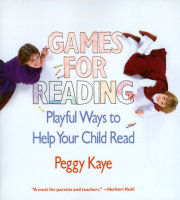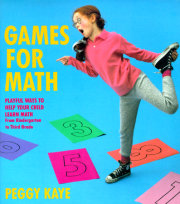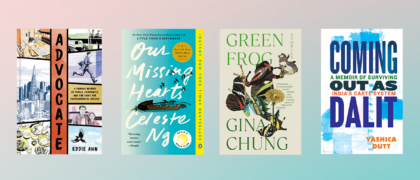I N T R O D U C T I O N [ . . . ]
There’s not set method for using
Games for Reading. Some parents may play favorite games regularly. Other mothers and fathers will keep the book on a shelf until a rainy Saturday, then pull it out and play two or three games, just as something to do. Certain parents have the time and desire to prepare the game boards and special playing cards that some games require, and are happy to spend lots of energy over such games. Others will stick to games that require no preparation and can be enjoyed during car rides or while cooking supper. Whatever pattern fits your family is fine. And it’s not at all necessary to go through this book from beginning to end. You may start with Part One, but you can just as well begin with any of the other three. Feel free to move back and forth from one section to the next. As long as you pick out games that are fun for you and your child, you’ve made the right choices.
Your child is likely to find one or another section harder than the others, depending on his special areas of strength and weakness. I had one student, Helena, who had no trouble sounding out words, but slowed down when it came to memorizing them. It didn’t surprise me that she found Part Two (sounding-out games) easy, and Part One (sight-vocabulary games) difficult. What to do with a child like this? Play both the hard games and the easy ones. The hard games work on a child’s weaknesses; the easy games build on strengths. That’s the best way to help any beginning reader.
Occasionally I’ve indicated that a game shouldn’t be played until a child reaches second or third grade. Even if a child is doing advanced work in first grade, it’s still better to hold off on these particular games, in order to avoid possible conflict between the games’ methods and the specific techniques that your child’s teacher prefers for introducing new skills. But never worry that a child is too old for any game that he enjoys. Professional musicians practice scales, and children in the first three or four grades can benefit from even the simplest games. When a child has serious learning problems, games, although helpful, don’t constitute a cure-all. Children with serious problems need help from trained professionals. If your child is already receiving special help, you might ask his tutor or teacher to pick out appropriate games for you to play at home.
There’s one important rule that applies to every part of this book. You must always remember how important you are to your child and how much he or she wants to impress you. Because of this your child may find it painful to fail in front of you. Your attitude toward mistakes, therefore, becomes crucial to the success of these games. If mistakes are fine with you, your child will have an easier time playing. You can help by being nice about it your child’s errors—for instance, by saying: “Oops, a mistake. Don’t worry, I make mistakes, too.” Or: “It’s OK to give the wrong answer. If you always knew the right answers, this game wouldn’t be fun any more.”
And having fun is the key thing. If these games aren’t fun, they aren’t working. With each game, ask yourself if you and your child are having a good time. If the answer is no, try another game: there are lots of them. Or you may want to tinker with a set of rules to suit yourselves, or invent new games based on the ones here. Sometimes it’s worth trying a game again; your child may dislike a certain game today, yet love it tomorrow—or next year—and you may feel the same way. Some of the games call on you to do silly things or jump around the room. Tonight you may not feel up to that. But come Saturday morning, jumping around and acting silly may seem like a great idea—especially when you know it’s helping your child learn to read.
Copyright © 1984 by Peggy Kaye. All rights reserved. No part of this excerpt may be reproduced or reprinted without permission in writing from the publisher.









